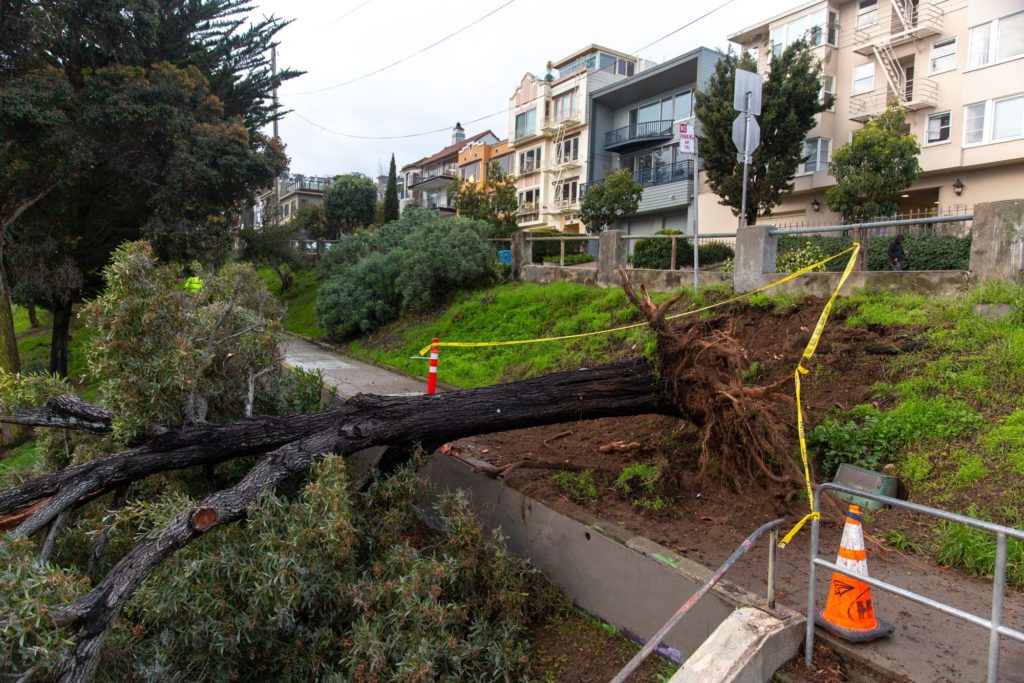San Francisco is in the path of one of the worst rainstorms yet in a season that has likely left behind $1 billion in damages and losses across California from drenching atmospheric rivers.
(Bloomberg) — San Francisco is in the path of one of the worst rainstorms yet in a season that has likely left behind $1 billion in damages and losses across California from drenching atmospheric rivers.
The latest storm, forecast to hit Monday, is drawing on a ribbon of moisture stretching more than 2,500 miles (4,000 kilometers) across the Pacific Ocean and is targeting San Francisco and the Bay area, said Jon Porter, Accuweather Inc.’s chief meteorologist.
The deluge is set to strike a city that has suffered its heaviest period of downpours since the invention of cable cars in 1873.
“It is going to come down too fast and too furious,” Porter said in an interview.
“It could be catastrophic.”
California has been hit by a series of atmospheric rivers — long moisture bands that can dump as much water as what flows through the mouth of the Mississippi — within the past two weeks.
The storms have likely caused more than $1 billion in damages and economic losses, according to Accuweather estimates, and have killed at least five people.
The looming storm is already being considered mostly hazardous for the Bay area, with meteorologists rating it as a Category 4 on a five-step scale for ranking severity of atmospheric rivers.
In comparison, this week’s storm ranked as a Category 2 in its hardest-hit area, since it brought more wind than torrential downpours.
Rain Records
While not all of California’s recent storms have been severe, the cumulative effect of the soakings raise risks to life and property as the ground gets saturated.
The next storm, expected to arrive Monday, will be the worst among the series of recent atmospheric rivers to drench the region.
“This is going to be yet again a multi-billion dollar disaster,” Porter said.
“It could become much more than that depending on where the rainfall comes.”
San Francisco received 10.3 inches (26.2 centimeters) of rain between Dec. 26 and Jan. 4, making it the wettest 10-day stretch in more than 150 years and the second-wettest two-week period ever recorded in the city, according to Porter.
The two-week record was about 14.4 inches in January 1862.
Atmospheric rivers often come in “families” with only days between them — a concept advanced by researcher Meredith Fish in a 2019 paper.
“Not all atmospheric rivers are the same, but when they happen in these families they can become progressively more hazardous,” said Jason Cordeira of Scripps Institution of Oceanography.
“A weak storm at the end of a very busy time could still produce a hazardous outcome.”
That’s because swelling rivers don’t have time to recede and the ground gets saturated and loose, raising risks of mudslides.
People also don’t have time to clean up damage.
Those around San Francisco should prepare now for the possibility that travel may be difficult and some communities at higher elevations could get cut off, Accuweather’s Porter said.
“This whole weather pattern will be one that people are going to remember for a long time.”
More stories like this are available on bloomberg.com
©2023 Bloomberg L.P.










